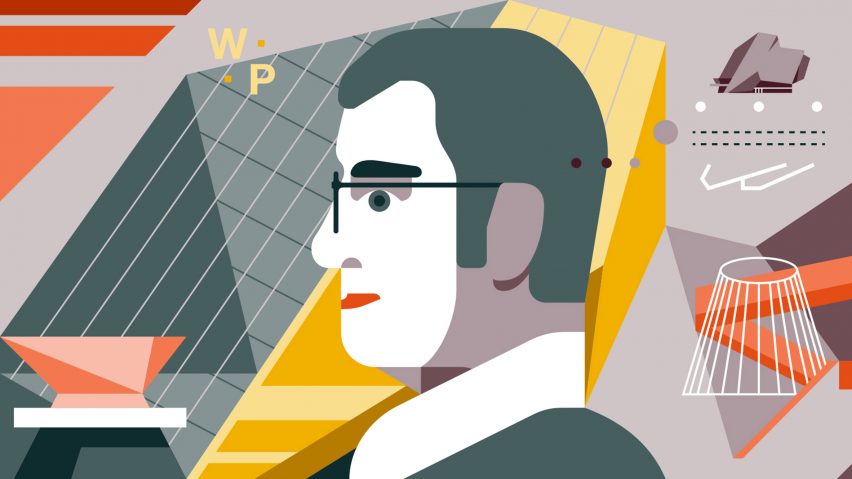
Wolf Prix is the deconstructivist architect who said "architecture must burn"
Continuing our series revisiting deconstructivist architecture we profile Wolf Prix, one of the founders and principal of the radical Austrian practice Coop Himmelb(l)au.
The studio featured alongside Zaha Hadid, Frank Gehry, Rem Koolhaas, Daniel Libeskind, Peter Eisenman and Bernard Tschumi in the Deconstructivist Architecture exhibition at New York's Museum of Modern Art (MoMA) and was responsible for some of the earliest built examples of the style.
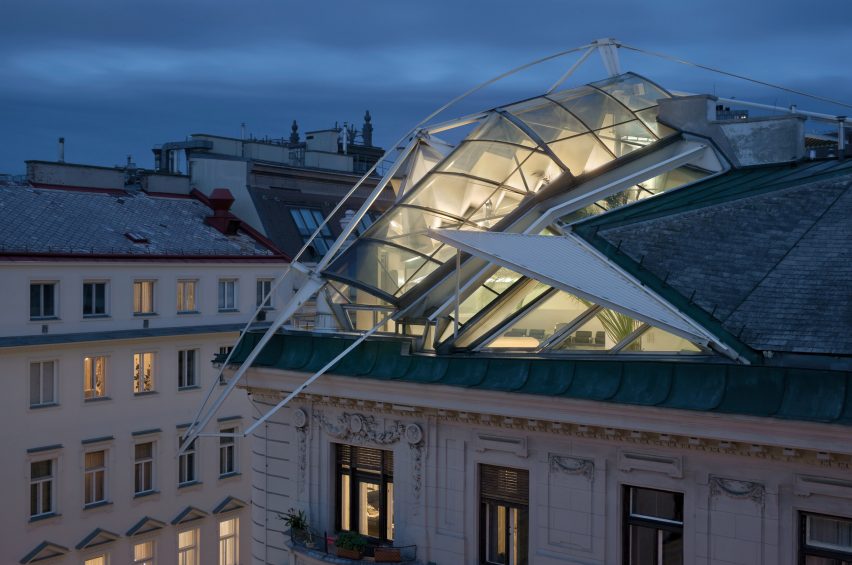
Prior to this, Coop Himmelb(l)au developed daring experiments that tested the boundaries of architecture, from inhabitable PVC Astro balloons and pneumatic living pods to buildings that would shoot flames into the night sky of Vienna.
These radical, experimental projects were preoccupied not with architecture as it was traditionally defined, but as something centred around sensory and bodily experience, an interest that would define Prix's career.
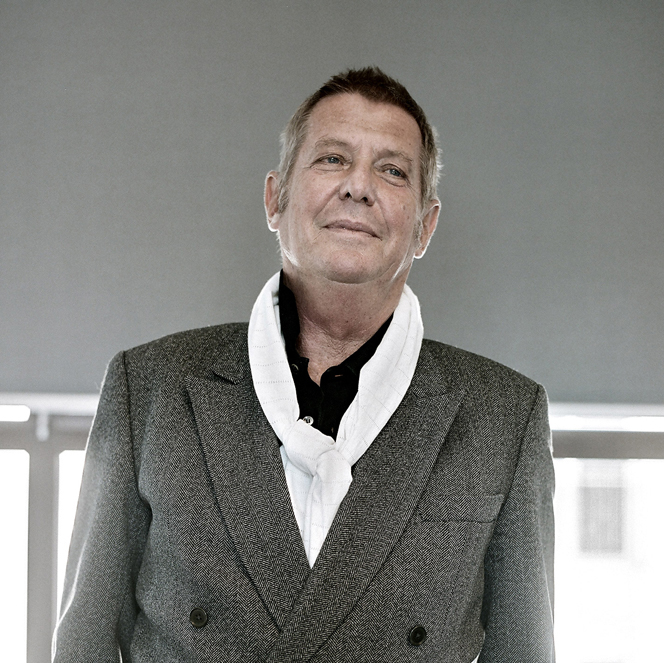
Born in 1942 in Vienna, Prix studied at the Vienna University of Technology, London's Architectural Association, and the Southern California Institute of Architecture in Los Angeles before founding Coop Himmelb(l)au with Helmut Swiczinsky and Michael Holzer in 1968, both of whom have since left the studio.
The practice was formed during a particularly exciting time for more experimental architectural thinking in Vienna, exemplified by the avant-garde magazine Bau, whose editors included the Austrian architect Hans Hollein.
In the same year Coop Himmelb(l)au was founded, Hollein published his seminal text "Alles ist Architektur" or "Everything is Architecture", in which he declared that architects must stop thinking about their work simply in terms of buildings.
"Limited and traditional definitions of architecture and its means have lost their validity," he declared. "Today the environment as a whole is the goal of our activities… the extension of the human sphere and the means of its determination got far beyond a built statement."
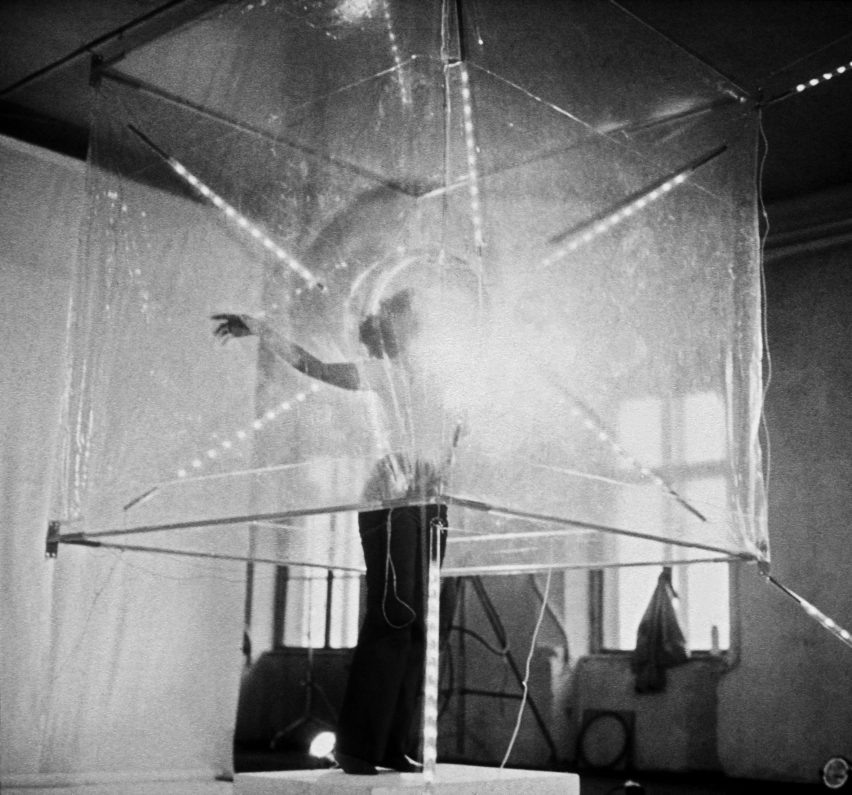
It was a mindset that Coop Himmelb(l)au wholeheartedly embraced, with early works that took a response to the human body and biology as a starting point rather than any ideas of structure or function.
It was this desire which had informed the firm's name, a play on the German word "himmelblau" – sky blue" – and "himmelbau" – "sky building" – a reflection of the group's aim to "make architecture light and fluctuating like clouds."
Making a dramatic entry onto the scene in 1969, the practice presented the project Astroballon at a gallery in Vienna.
In this work, a woman stood with her upper half inside a giant PVC balloon, wired up to devices that would measure her heartbeat and transmit it as flickering lights and sounds in a concept called biofeedback, intended to allow the user to enter a meditative state.
While similarities could be drawn with projects such as Reyner Banham's 1965 Environment Bubble, Coop Himmelb(l)Hau's proposition was far more about the individual, and the ways in which architecture could respond to individual needs.
"We fought back against the cold, inhuman, functionalist designs of the 1950s, said Prix in a 2020 interview with World Architects.
"In a very polemical way, we turned against the older architects…. we wanted to create an architecture that adapts to people, not the other way around."
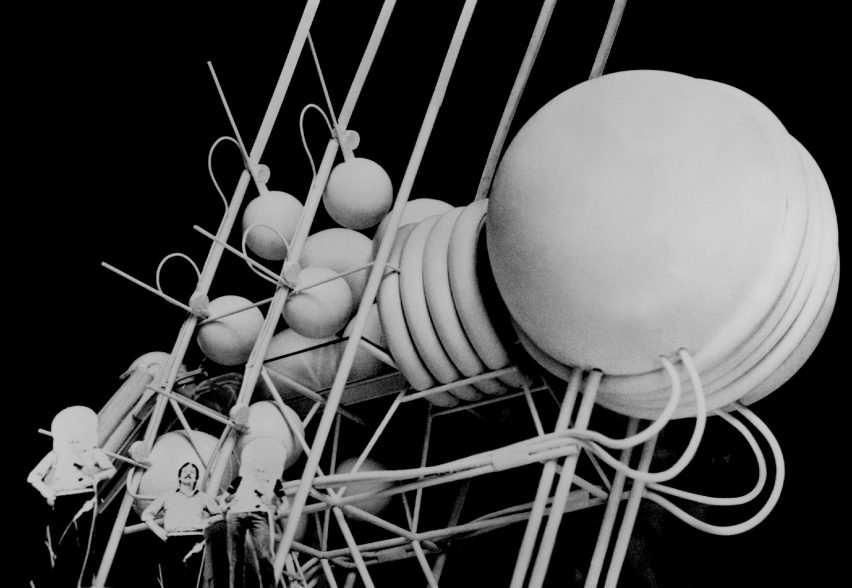
Inflatables were to be a recurring theme. In the project City Soccer in 1971, the practice released four giant inflatable footballs onto the streets of Vienna to bring a sense of creative liberation to the streets, and the Villa Rosa pneumatic living prototype in 1971 proposed a home constructed from eight inflatable balloons that would incorporate colour, sound, and fragrance for a sensory living experience.
The practice also played with ideas of function and programme, much like fellow deconstructivist Tschumi.
The Hot Flat Apartment in Vienna in 1979 was an unbuilt proposal for converting a multi-storey car park into a block of flats, leaving the central car lift in place for residents to use and cut through by a horizontal communal space topped by gas jets that would throw gigantic flames into the sky.
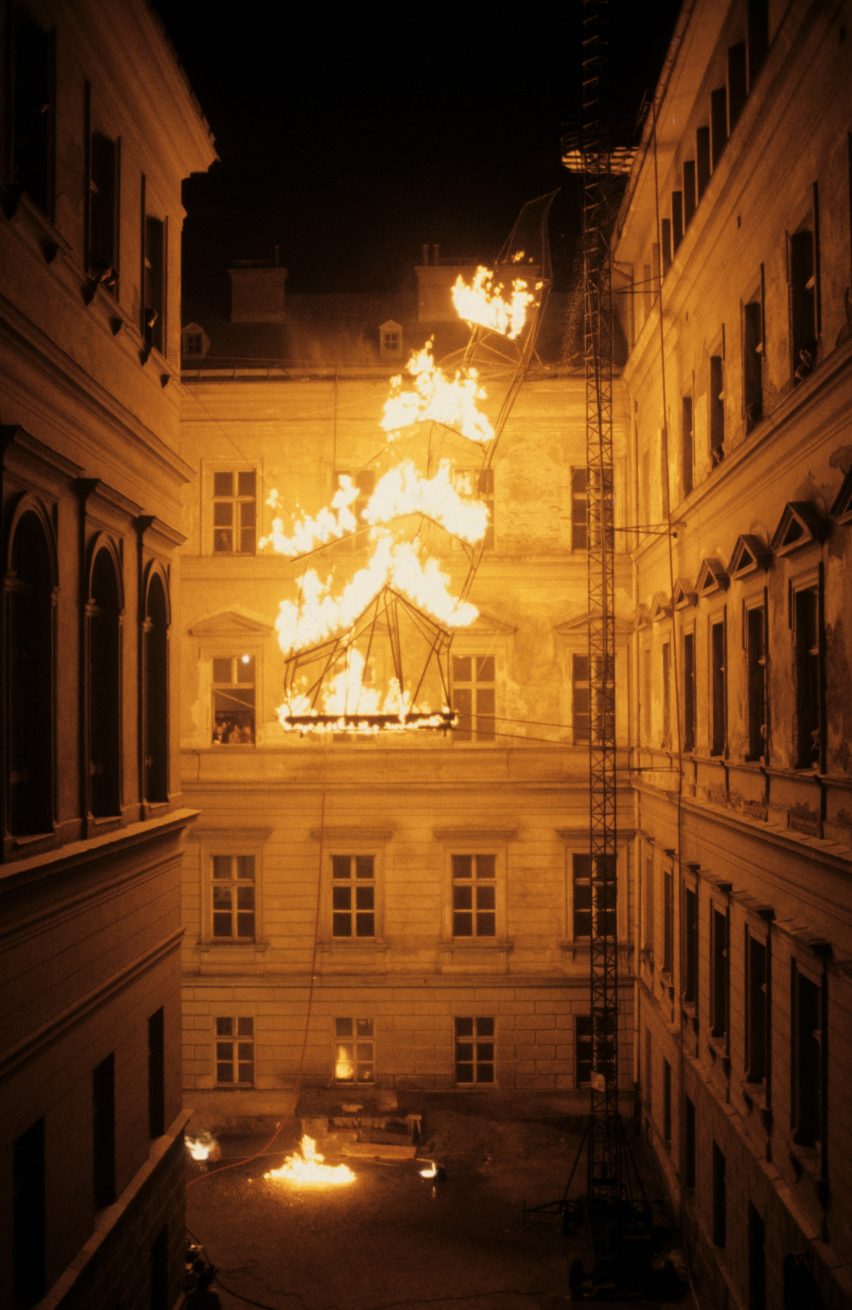
These propositional projects culminated in 1980 with a project called The Blazing Wing presented at the Technical University in Graz. Suspended from a crane in the university's courtyard was a 15-metre-high faceted steel and mesh structure, which was set alight, its crackling amplified and broadcast to the surroundings.
In an accompanying manifesto the practice declared; "We want architecture that has more. Architecture that bleeds, that exhausts that whirls and even breaks. Architecture that lights up, stings, rips and tears under stress… architecture must burn."
Coop Himmelb(l)au's first forays into built projects in the 1980s required the abandoning of many of its more radical, bubble-based ideas, with these concepts of breaking, ripping, and tearing instead guiding the creation of distorted, chaotic forms in steel and glass.
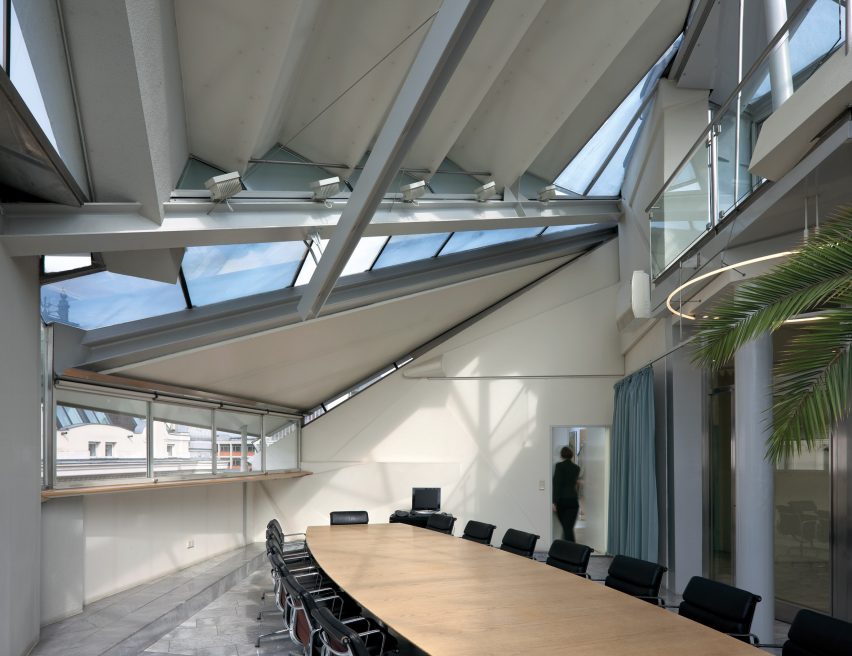
The practice's first project was also one of the first examples of deconstructivist architecture: the rooftop remodelling at Falkestrasse in 1985.
Commissioned to extend the office of a law firm housed in a traditional Viennese apartment block, the practice ignored many of the area's planning regulations to create angular, glass and steel extension that appears to burst out of the building's roof.
Featured in MoMA's Deconstructivist Architecture exhibition, curator Mark Wigley described the project as an "unstable biomorphic structure" and a "skeletal winged organism".
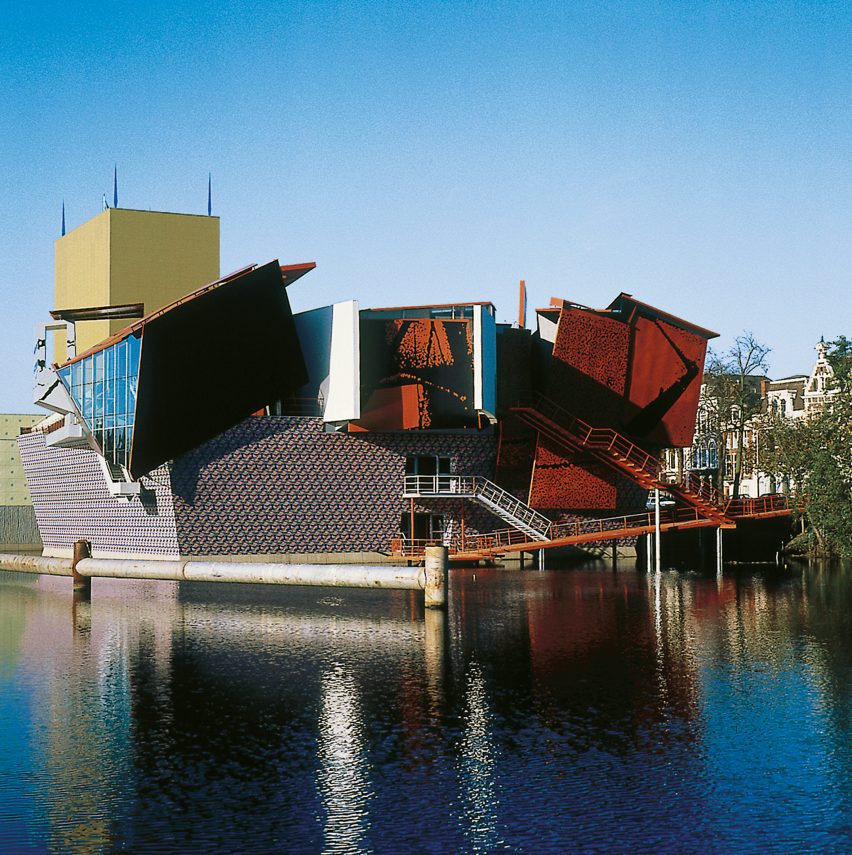
Like many of the architects featured, the exhibition brought Coop Himmelb(l)au international attention, and the impulses explored in the rooftop extension were expanded in the practice's first large-scale cultural project, The East Pavilion at the Groningen Museum in the Netherlands in 1994.
Described as a space "breaking the prison of the functionalist box into a thousand pieces," the building is formed of steel plates - fabricated at a nearby shipyard - that either crash together to create rooms or are fitted with glass panels where they do not quite meet.
At the crystal-like UFA Cinema Centre in Dresden in 1998 the themes of the Falkestrasse extension were again expanded, with an angular concrete block alongside a giant glass crystal containing a foyer filled with stairs and bridges.
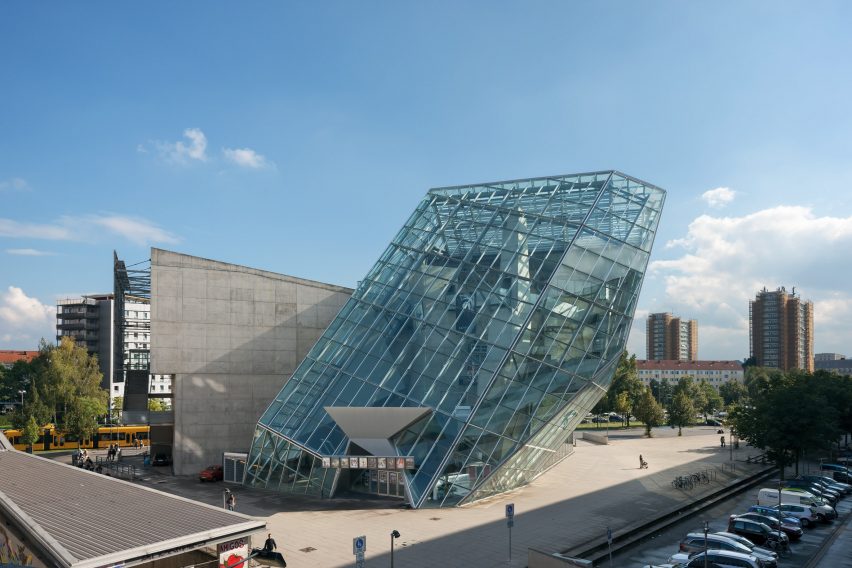
A string of residential projects in Vienna, including the SEG Apartment Tower in 1998 and Gasometer B Building in 2001, swapped more chaotic forms for programmatic experimentation incorporating elements such as a "sky lobby" in the SEG Tower to both passively heat the block and create a communal space.
At the Weinberger City Apartment Towers in 2004, a group of three otherwise ordinary apartment blocks are linked by a "sky loop" of steel girder bridges that smash into the corners of their eighth storeys.
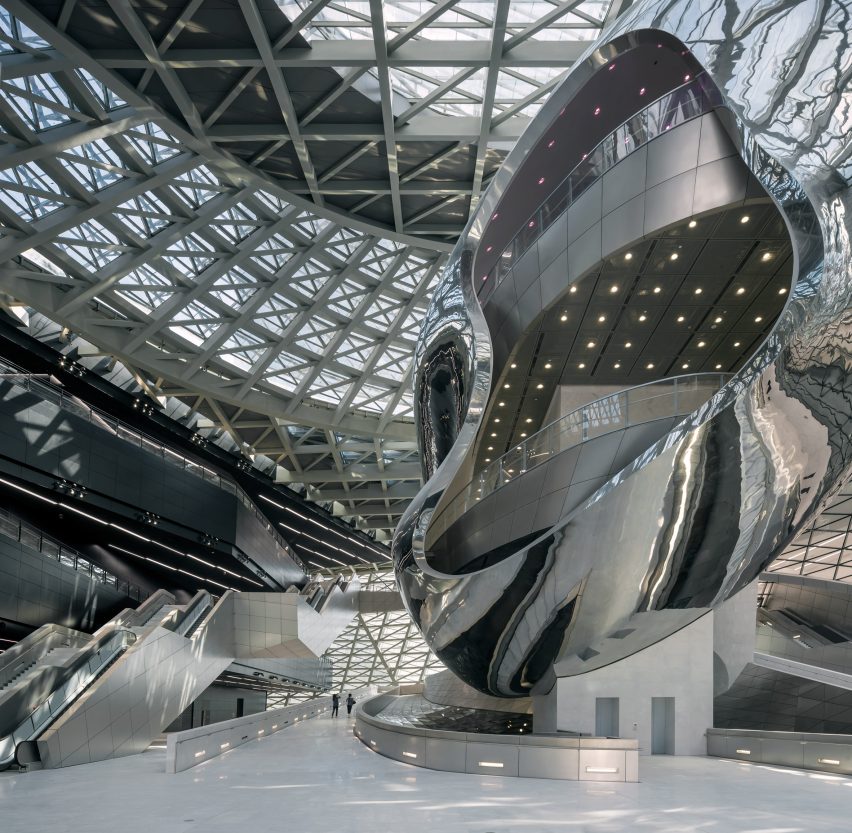
Like many of its contemporaries, Coop Himmelb(l)au's attention soon turned to China, drawn by the pace of development and opportunity of larger-scale work.
The International Conference Centre in Dalian in 2012 moved away from a more angular style towards flowing, spaceship-like forms, which like the Groningen project turned to local shipbuilders to fabricate and bend the steel plates that cover its exterior.
A similar approach was taken at the Museum of Contemporary Art and Planning Exhibition in Shenzhen in 2016 this time using robots to aid in the construction of its form.
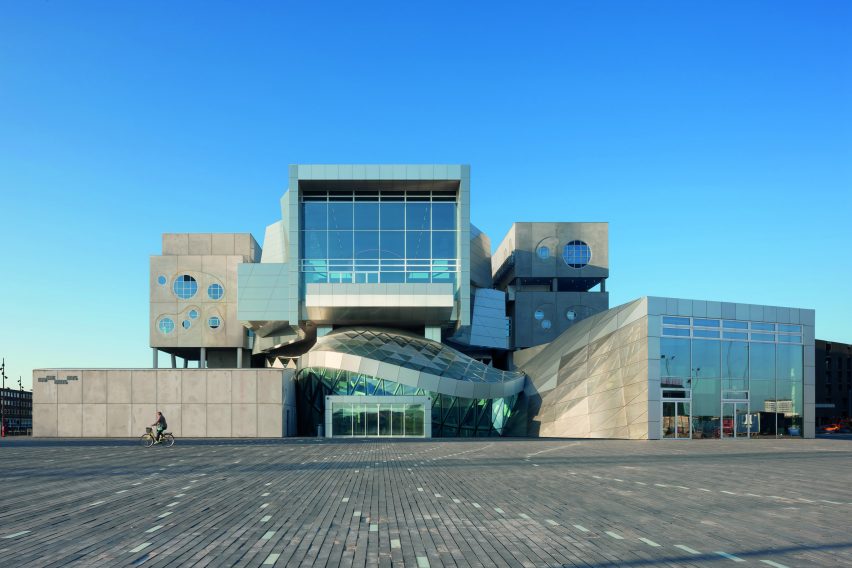
But the studio continues to win large-scale commissions in Europe, notably the House of Music in Aalborg in 2014, a school and concert hall housed in a cluster of interconnected concrete blocks, and the House of Bread in Austria in 2017, with a steel-clad blob housing a spiral staircase set atop a box-shaped plinth.
Prix sees these free forms – and the technologically advanced methods that enable them – as key not only to the creation of unique spatial experiences, but to the development of the entire profession.
"We have to find a way out of the standstill of our profession – there must be no more boxes," he told Dezeen in a 2015 interview.
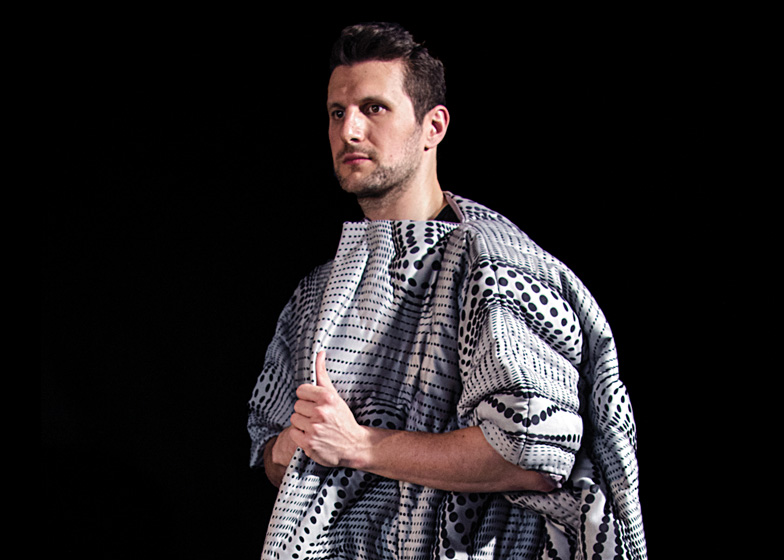
While the studio's experimental work became far less frequent after the 1980s, it has not stopped entirely. In 2014, the practice presented a quilted cloak called the Jammer Coat, covered in a spotted pattern designed to protect its wearer from unwanted data collection.
Most recently the studio attracted controversy for its decision to continue working on its SCA Arena in St Petersburg and a museum and theatre complex in Russia after its invasion of Ukraine, which prompted many other firms to cease work in the country.
Despite stating in his 2020 interview with World Architects that his generation would "not have stood by and simply watched" were it faced with today's surge in populism, Prix continues to defend the firm's presence in Russia, telling German Magazine Der Spiegel that "once and for all: architecture is art and art knows no sanctions or borders."
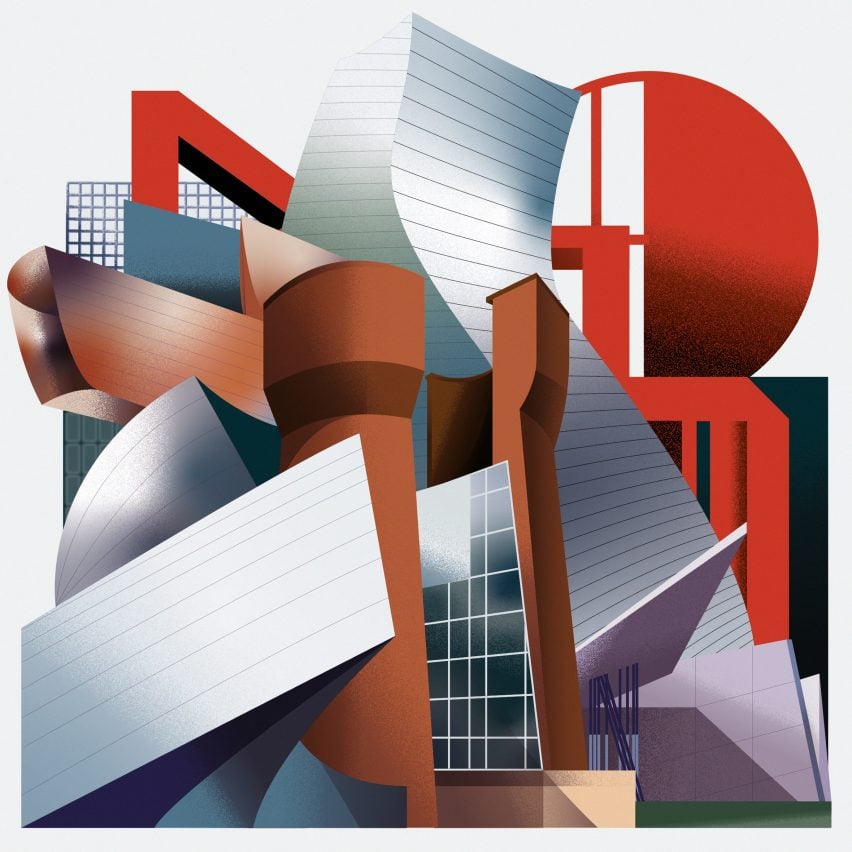
Deconstructivism is one of the 20th century's most influential architecture movements. Our series profiles the buildings and work of its leading proponents – Eisenman, Koolhaas, Gehry, Hadid, Libeskind, Tschumi and Prix.
Read our deconstructivism series ›